#celtic place
Text
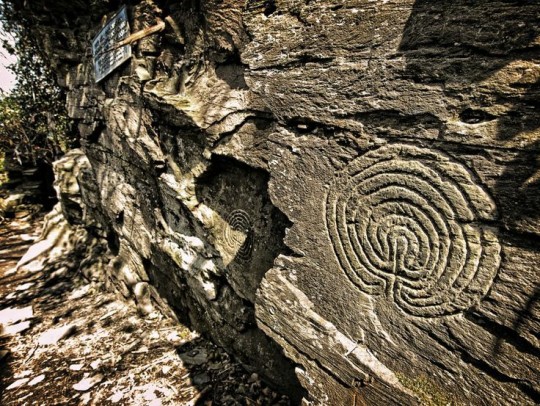

Labyrinth Rock Carving - Tintagel - Cornwall
#labyrinth#carving#stone carving#druidry#druidic#paganism#tintagel#cornwall#england#arthurian site#celtic place
3K notes
·
View notes
Text
See, I personally find this quest to find pagan/pre-Christian elements in Welsh/Irish literature quite unnerving - I don't know about anyone else.
There's something to be said about genuinely discovering pre-Christian elements in a narrative or story and that being where evidence and study has led you. But I see some people on this fruitless quest to find pagan elements in very Christian texts and sometimes it feels like if no pagan elements can be found, people start making stuff up out of whole cloth - and that can be very dangerous for already not-well known texts in minoritised languages!
There's already so much misinformation out there about Irish/Welsh texts and literature in general - so it hurts to see people carelessly adding to the misinformation either out of ignorance or lack of respect for the source material.
I promise you the source material being Christian doesn't ruin it - you can in fact, enjoy these myths without making them into something they're not!
#I feel like general ire towards (particularly) colonial Christianity has informed how people think of and view anything that is associated#with Christianity - and ire towards some of the ills committed in the name of Christianity is very valid actually#but what it isn't is approaching any text written in a Christian context and immediately disregarding it for having anything unique or#insightful to say. And in a Celtic languages context#this can be especially othering and almost fetishistic of an imagined pagan Ireland and Wales which was 'covered up' by Christianity#and that desire for people outside of Ireland and Wales to impose a kind of 'pagan faerie culture' onto the modern countries directly feeds#into false depictions of Ireland and Wales as 'lost in time' or as magical places full of latent pagan culture &c. which can be really#damaging in its own way against people who live in Wales or Ireland or who speak Welsh or Irish#this goes for other Celtic speaking nations too like Scotland Brittany Isle of Man and Cornwall#But Wales and Ireland tend to be the most focused on for this kind of treatment#luke's originals#Welsh#Wales#Cymblr#Irish#Ireland#welsh mythology#irish mythology#irish literature#welsh literature#Arthurian legends#arthurian literature
327 notes
·
View notes
Text
Like, it's fine to relate songs you like to fiction you like. That's good and fun! Hozier's music is often political commentary, but it's also about love and emotion and has inspirations in other genres of music and fiction (esp Unreal Unearth, which is explicitly based on Dante's Inferno).
The trouble comes not with linking, you know, a love song to your favorite blorbo, it's when you reduce Hozier the person into a magical sad fairy man stereotype Too Good for This World in a way that both reduces the influence of black music and artists on his work AND fetishizes Irishness as a whole as if Ireland is a fantasy kingdom of the past and not a real place populated by real people.
#hozier#if you're an american with irish or otherwise celtic ancestry (like i am)#it's understandable to feel the ache of disconnection and the urge to romanticize the place our ancestors came from#but the way to express that is to educate yourself about your family's history and the modern countries#not turn them into a fantasyland in your mind and dehumanize current citizens of those places#hozier's music is magical the same way any good art is magical#not because he's an otherworldly fairy man separate from modern politics or his varied (and often black) artistic influences#bog post
180 notes
·
View notes
Text
Something that gets left out in some eclectic discussions of the celtic fire festivals is that they are the end of one season and the start of another
Imbolg- Start of Spring
Bealtaine- Start of Summer
Lúnasa- Start of Autumn
Samhain- Start of Winter
Which makes sense because in Ireland the seasons are generally defined as:
Spring – February, March, April
Summer – May, June, July
Autumn – August, September, October
Winter – November, December, January
Like if you went up to a random person in Ireland today and asked them what season February is in they’d say Spring.
Seasons are obviously different across the world, in fact many places don’t have 4 seasons so the misunderstanding makes sense but seeing people frame Imbolc as “Oh its not a spring festival its the just bringing back of light” is just factually wrong.
#féile#irish paganism#gaelic paganism#celtic paganism#Irish polytheism#gaelic polytheism#celtic polytheism#gaelpol#iripol#witch#I think other places use the solstaces/equinoxes?#this is a weirdly common thing tho#magic#ireland#mine#witchblr
212 notes
·
View notes
Text
If your WIP became a TV show, what would the theme song be like? Instrumental? A repurposed pop song? A specially-written song with lyrics that explain the premise? A five-second musical sting over the show logo?
#adventures in writing#if lily between worlds can count as a wip#then it would have a lightly dreamy yet upbeat pop song by a female singer#with thematically appropriate lyrics about learning who you are and finding your place in the world#as far as retellings go#both the tattercoats and goose girl retellings could have dreamy and faintly celtic instrumentals#over a series of pastoral and fairy tale images
175 notes
·
View notes
Photo
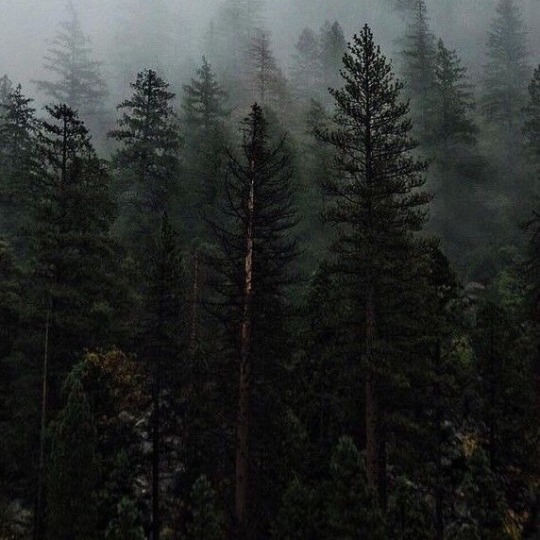


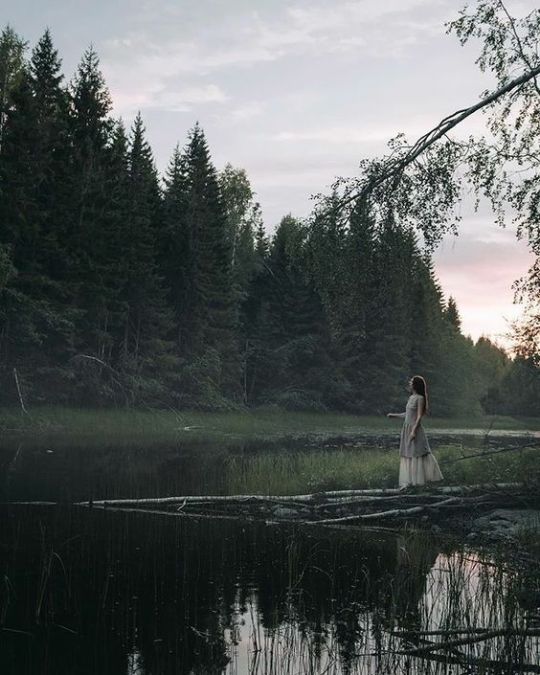
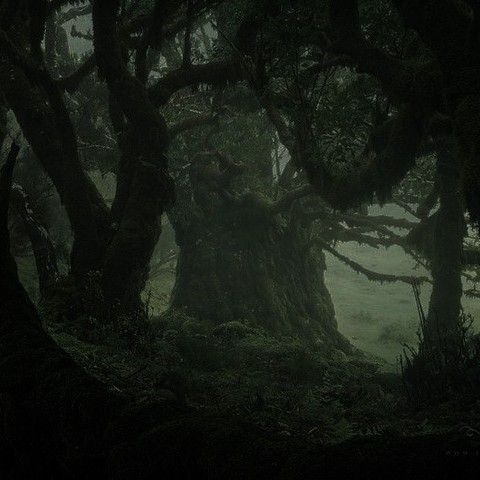
#photography#nature#forest#trees#foggy#lake#river#witch#horse#atmosphere#mood#pagan#nordic#slavic#celtic#freedom#beautiful places#viking#magic#ritual
1K notes
·
View notes
Text
Arthur and anglo saxon poetry fucks me up. We call it the Dark Ages because of a dearth of sources, but we have a melancholy poem describing the ruins of Aqua Sulis, or Bath, in the centuries after the Roman Collapse. I might make this into a fic someday, but Arthur is only a boy half-grown and roaming through the anglo-saxon heptarchy, a world he still can't quite wrap his head around, Cumbrian, a Celtic language, still first to cross his lips as he stares up at a ruined city. But more and more of what will one day be English rolling around in his mind, two languages with so few loan words there is nothing in English we can use to construct his mother tongue. Walking through a city, what was once a real and robust city and now lays dead and decaying, he wonders.
Who's bones are these broken beams? His own? Were he and Alasdair and Rhys something once called Britannia, now faded? Are they Rome's, who died thousands of miles away in a place Arthur hasn't seen for centuries? His mother's? She ruled and represented nebulous things, these borders shifting and flexing. Rome made a desert and called it peace, but she ruled it anyway, lady of the waters and the north. Maybe. He's unsure. He touches fallen tile and broken stone and knows what he knew when she drew her last. The end of a world that began failing long before. He'll never be able to sort the losses out; the words he may have once used to describe them are dead and gone by the time there are experts enough to study it. All that once made sense has been forgotten under the weight of a thousand years.
This masonry is wondrous; fates broke it
courtyard pavements were smashed; the work of giants is decaying.
Roofs are fallen, ruinous towers,
the frosty gate with frost on cement is ravaged,
chipped roofs are torn, fallen,
undermined by old age. The grasp of the earth possesses
the mighty builders, perished and fallen,
the hard grasp of earth, until a hundred generations
of people have departed. Often this wall,
lichen-grey and stained with red, experienced one reign after another,
remained standing under storms; the high wide gate has collapsed.
and
Far and wide the slain perished, days of pestilence came,
death took all the brave men away
their places of war became deserted places,
the city decayed. The rebuilders perished,
the armies to earth. And so these buildings grow desolate,
and this red-curved roof parts from its tiles
of the ceiling-vault. The ruin has fallen to the ground
broken into mounds, where at one time many a warrior,
joyous and ornamented with gold-bright splendour,
proud and flushed with wine shone in war-trappings;
looked at treasure, at silver, at precious stones,
at wealth, at prosperity, at jewellery,
at this bright castle of a broad kingdom.
#Britannia and her children || they made a desert and called it peace#hws england#Arthur || stone set in the silver sea#Eirian || into the nightlands#my writing || cacoethes scribendi#I can kind of read old english and it always fucks me up how theres hardly a celtic root word anywhere that's not a place name#im not depressed im analysing texts!!
41 notes
·
View notes
Text
shut UPPPPPPPP

9 notes
·
View notes
Text
trying to formulate a way to word this better, and aware of the shaky ground i'm on saying this as a british person. but i am still thinking about that poll that was like 'vote for the worst european country' and of course england won by a mile (france should have been head to head imo. sorry to french mutuals) but my head is still reeling from the Large number of people in the comments who were shocked and surprised that anyone could possibly vote for spain or the netherlands and were wondering what they could have Possibly Done Wrong. speechless
#the historical illiteracy of this site is genuinely gobsmacking#britain deserves to get its shit ripped but i think if people really believed what they said beyond the memes#we would perhaps be in a better place. or at least have a marginally better understanding of western european colonialism.#again i reiterate i know im the worst person to be talking on this topic but i just couldnt fucking believe it when i read it#this is to say nothing bad about the people themselves of spain and the netherlands at all!!!#i mean as i said i'm from britain. what can i say lol.#there's also a weird paternal fetishising of celtic nations on this site that i've noticed that ignores their complex history but#that is Enough from me on this topic!!!!!!
23 notes
·
View notes
Text

Here's the current draft for Thalamhan's map, including the names of all four cities and Danuas's location! Things are most likely going to change in the future but for now, this is the layout. It's not entirely accurate, for one the scale is probably bound to change and the map presents the colony as very vertical when it's not. I'd probably need to make it in a 3D software for it to be the most accurate it can be, but that can be for another time
When Danuas tunneled into the planet millions of years ago, the series of interconnecting cave systems she left behind would become Thalamhan. Early Thalamites would found Danann, the capital city, and during the Branching Era centuries later, they would expand upward toward the surface, founding the other three cities as well as many smaller towns and villages. Thalamites also live along the tunnels connecting each settlement to another.
Danann is the capital and cultural center of the colony, home to the Sacred Grounds. Beneath it is Danuas, accessed only by the cityspeaker through an entrance known as the Well of the Titan.
Loc Faore is the agricultural capital, a city built around a large lake of the same name. The settlements that surround it are along the streams that come from the lake, home to most of Thalamhan’s farmers.
Astorea is known for its high population of smiths and metallurgists. Its nickname is Little Danann, as it has the second largest cultural scene in the colony, particularly textiles and art.
Tollana is unique for being a mostly vertical city, so most of its population are Thalamites with flight based alternate modes. Many scientists and engineers including some from Danann have residences here, as it is the closest city to the surface, perfect for researching the planet and sky themselves.
The dark regions that surround the colony are the Darklands.
#for some fun facts:#the capital danann is directly lifted from Tuatha De Danann which are in some regards the predecessors to the fae folk#It sounds like Danu which is the name inspiration for Danuas#Astorea is named after a place in gw2 where fae inspired plant folk live - thalamhan takes a bit of inspiration from them as well#(you'll def see the insp later when i talk about how thalamites are forged XD)#Loc Faore is a spin off 'Loch' and 'Faoi' which are 'Lake' and 'Under' in irish respectively#and Tollana is off of tollán which is 'tunnel' in irish#at least i hope all of this is right. im trusting my translator here#i am not irish but hopefully I'm doing as well enough research as I hope I am XD I love me some celtic lore!!#anyway#a lot of the big and important thalamite names such as the cities and titan have irish insp#thalamhan#worldbuilding#cjj arts#transformers fan colony#maccadam#transformers
88 notes
·
View notes
Text
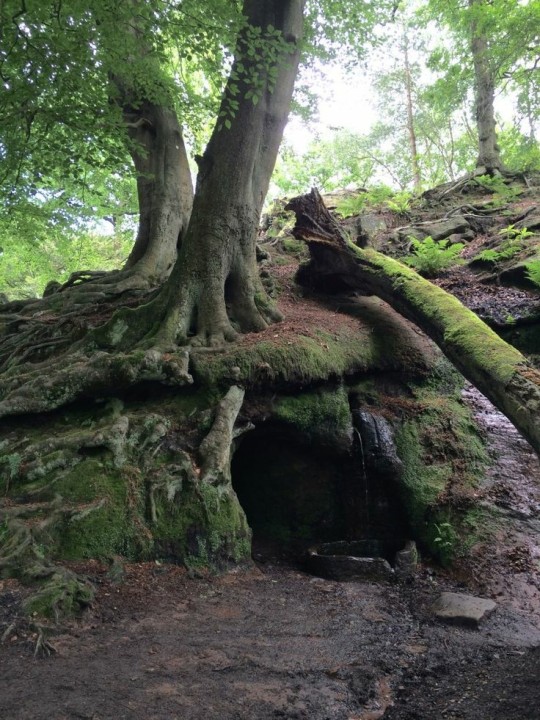

Alderley Edge Sacred Well - Cheshire - A celtic portal
#sacred well#sacred place#alderley edge#nature#sacred water#druidic#druidry#celtic place#paganism#tree#forest#well#a celtic portal#portal
390 notes
·
View notes
Text
With the current walrus/fairy controversy on this site, I decided to ask my family their opinions. My mum and my brother, the more new-age hippie types, said a walrus would be more surprising. My dad and sister, who consider themselves more 'grounded,' said a fairy would surprise them more. With this very small sample size that means nothing, we're about 50/50 for people who aren't Tumblrbrained.
That is not the point of this post.
My brother's girlfriend said, and I quote, "neither." As in, she would not be at all surprised to find either a fairy or a walrus knocking on her door. I think we should all put aside our differences and talk about whatever the fuck is going on there for a little bit.
#walrus vs fairy#im in the 'both would be surprising but walrus moreso' camp#my family are either in the 'we live in a place with big fairy superstitions' or the 'fairies arent real therefore less likely' camps#but to say 'I would not bat an eyelid if either a fairy or a walrus knocked on my front door' is Fucking Fascinating#admittedly its a celtic island in the irish sea so youre probably equally likely to see either at any given time
9 notes
·
View notes
Text

(Vulgate Cycle - Mort Artu)

(Post-Vulgate Cycle - Mort Artu)
SIGH
On one hand, I don't like the idea that Guinevere can't handle Monastic/Ascetic Life.
On the other Hand, I'm really resentful with Modern Arthuriana that have Guinevere be convent-raised/educated.
#a rock and a hard place#monasticism#clerical necromancy#medieval education#queen guinevere#lancelot grail#vulgate cycle#post vulgate#mort artu#arthuriana#arthurian legend#arthurian mythology#arthurian legends#the mists of avalon#celtic christianity
6 notes
·
View notes
Text
A lot of people like the idea of a modern-ish retelling of Dororo. I personally think the 1980s or 90s would fit best for a punk or grunge vibe.
I'm still stuck on my Spanish-American Western Dororo reimagining phase, since Samurai to Cowboy stories transition pretty well due to the similar themes *coughZorrorocough*.
But I'm also starting to see it making more sense if there was a retelling that took place in Spanish-colonial Philippines since a mix of post colonial dysphoria and filipino superstition would fit well with original war-torn setting and supernatural horror of the original Dororo.
These are just ideas that have evolved in my head. Someone else could be pitching a space opera version else where. Search and Destroy already took on a Soviet Sci-Fi dystopia theme.
#Rainb0w Rambles#Dororo#This is mostly just idea sharing#maybe it's cause of looking into Trese again or other mythology stuff but yeah...#IF Dororo took place in Europe the Yokai and Demons would be Fae and Dororo's family would probably be norse or celtic rebels#osamu tezuka
19 notes
·
View notes
Text

Pictured: Into the Pandemonium, released in 1987
#celtic frost#thrash metal#black metal#doom metal#heavy metal#celtic frost are all over the place genre wise#i don't know how to tag this sorry#switzerland#polls
6 notes
·
View notes
Text
Season of the Witch
- The origins (and places) of the Cailleach
The Cailleach, divine Hag/Crone of Gaelic folklore, is often portrayed as the embodiment of Winter. She is said to appear as the earth is dying, and is known as a bringer of storms. She is said to control the weather and determine the length of Winter and its harshness.
She is also said to be responsible for the formation of many of the country’s most prominent landmarks, and there are probably more geographical and archaeological features on the Irish landscape, that are associated with the Cailleach, than any other character in Irish folklore (see pics for landmarks & associations).
As a creator of the land and controller of the weather, the Cailleach would appear to represent an archetypal sovereignty/land goddess, whose origins may be traced back to Bronze-Age, or even Neolithic cosmologies.
However, despite her presence on the landscape, the Cailleach does not appear in ANY of the Irish literary myths. In fact, most of the traditions we now associate with the Cailleach (such as her association with winter), can only be traced back as far as the late-19th Century Gaelic revival in Scotland, where she features much more prominently than in Irish folklore.
Her earliest appearance in any written form is in an ‘untitled’ poem from a 16th Century manuscript (though its language suggests some of it was written at a much earlier date - possibly 10th Century) which, after it was first translated in 1899, has come to be known as ‘The Lament of the Old Woman of Beare’.
In the poem, the woman (name unknown) describes herself as an aging Queen of the Beara Peninsula in southwest Ireland; lamenting the passing of her youth and the riches and attention that went with it. The poem’s essentially christian narrative holds no hope of redemption or regeneration for the the old woman or the ‘old ways’ that she seems to represent.
Although the poem is untitled, the original introduction line reads… “Sentainne Bérri Cecenit íarna senad don chríni” (The Old Woman of Beare said this when senility had aged her).
The Old-Irish word ‘Sentainne’ meaning ‘Old-Woman’ would come to be replaced in later Middle-Irish with the word ‘Caillech’ - which in Old-Irish means “the veiled one” (specifically a ‘Nun’) but by the 10th Century, had come to signify any woman beyond childbearing years (which was OLD in those days).
The Old Irish ‘caillech’ ('veiled one'), from Old Irish ‘caille’ (‘veil/cloak’) is generally thought to be a loan-word from the Latin ‘pallium/palli(i)’ meaning ‘cover’ or ‘cloak’ (usually in reference to religious vestments - hence the 'nun' translation).
If so, this would make the Cailleach a ‘relative’ newcomer (etymologically speaking), which has led many medievalist academics to propound that she is an early-medieval folk figure rather than an ancient divinity (no surprise there !). . . However, this could be yet another ‘folk-etymology’ - where the meaning of a word changes due to a popular misconception regarding its origins.
Classical writings indicate that the “Cailleach” may have been known as early as the 5th Century BC; in the area known today as Galicia, which gets its name from a Celtic tribe known as the Callaeci. This tribe on the north-west of the Iberian Peninsula were first named as the ‘Kallaikoi’ by the Greek historian Herodotus in the 5th Century BC; before being Latinised by Roman writers to ‘Callaeci’ in the 2nd Century BC - a name which Ptolemy suggested as meaning ‘worshippers of the Callaec’.
Interestingly, in Spanish folklore, another name for Galicia is "Terra Meiga" (Land of the Witches).
Given that recent archaeological, linguistic and genetic evidence points to a migration into Ireland by ‘Proto-Indo European/Proto-Celtic’ speakers during the Bronze-Age (c.2000 BCE); rather than the traditional view of a later migration of ‘Celtic/Old Irish’ speakers during the Iron-Age, (c.500-100 BCE): It seems unlikely that the word(s) ’caillech/caille’ would be ‘borrowed’ from Latin into Irish at such a late date.
Both Italic (Latin) and Celtic (Irish) are closely related branches of the Indo-European language family; with both languages diverging from the original Proto Indo-European (PIE) language sometime after 2000BCE (The similarity between the Celtic & Italic languages has even led some scholars to believe that there was a Proto Italo-Celtic language spoken prior to their divergence from each other).
Therefore, it now seems likely that the word ‘caille’ derives directly from the PIE root word, *kel- meaning ‘to conceal/hide/cover’.
However. *kel- is also the root of another PIE word - *Kolyo - meaning ‘the coverer’, which is thought to describe a (hypothetical) goddess who is half maiden / half grotesque, governing the realm of death, but also the life which is sustained by death… sound familiar?
It is therefore possible that the modern Cailleach is a variation of this ancient female deity/character (*Kolyo), brought here in the Bronze Age by the same Indo-European speakers, from whom the peoples of Ireland and Scotland are descended ?
- Jane Brideson
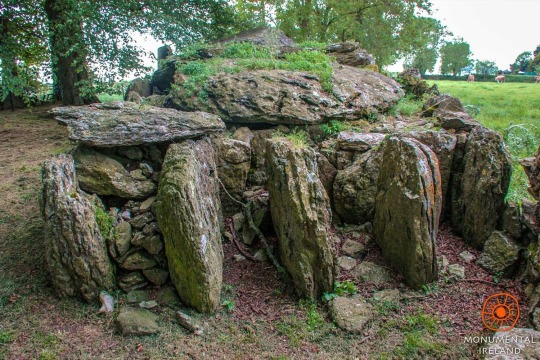
The Labbacallee (Hag’s Bed) Wedge Tomb in Co. Cork is said to be another of the Cailleach’s dwellings; which in this instance, she shared with her husband, the druid Mog Roith. Local folklore tells us that during an argument, a huge rock lying in the nearby river was thrown by the Cailleach at her fleeing husband, pinning him to the riverbed. . .
#Cailleach#ancestors alive!#what is remembered lives#memory & spirit of place#ancient ways#sacred ways#folkways#traditions#old woman#crone#wisewoman#hag#Irish#megalithic#ancient history#Celtic#galicia#iberia#ireland#scotland#folklore#myth
9 notes
·
View notes